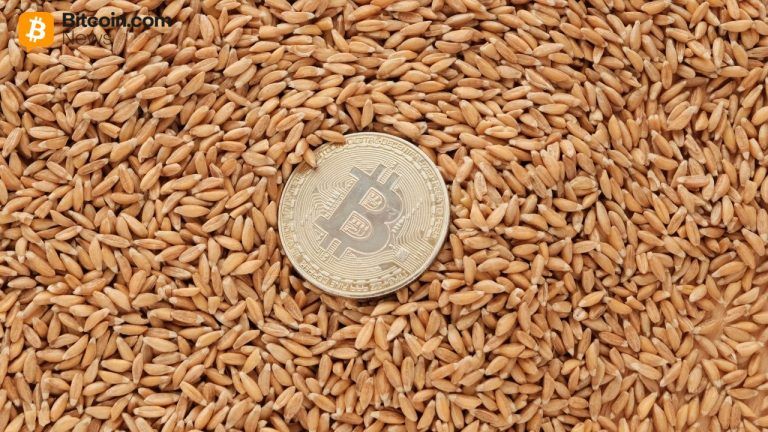Institutional capital has just validated cryptocurrency as a legitimate asset class. BlackRock’s iShares Bitcoin Trust now holds 802,200 BTC worth $98 billion, accumulated in less than two years.
The fund controls 3.8% of Bitcoin’s total supply and pulled in $3.5 billion in weekly inflows, representing 10% of all ETF market flows. But while BlackRock dominates headlines, sophisticated investors are quietly rotating capital into early-stage opportunities that offer exponentially higher upside.
Tapzi’s presale has emerged as the standout GameFi investment of 2025, priced at just $0.0035 with a confirmed $0.01 launch target. That’s a locked-in 185% gain before accounting for secondary market demand. The project addresses Web3 gaming’s core failure point by eliminating inflationary tokenomics and replacing luck-based mechanics with pure skill competition. Over 58.7 million tokens have been sold as investors recognize the value proposition. This isn’t another speculative meme coin. It’s a functioning platform launching into a market projected to hit $124.74 billion by 2032.
Institutional Bitcoin Validates Crypto, Early Presales Offer Asymmetric Returns
BlackRock’s Bitcoin ETF success proves institutional adoption has moved beyond speculation. The fund now holds more BTC than MicroStrategy’s 640,031 token corporate treasury.
All eleven original spot Bitcoin ETFs posted inflows last week, including Grayscale’s previously bleeding GBTC fund. The dozen ETFs have accumulated $63 billion in net inflows since the January 2024 launch. U.S.-listed Bitcoin ETFs now command $169.48 billion in assets, representing 6.79% of Bitcoin’s market cap.
This institutional validation creates a rising tide for the entire crypto sector. Bitcoin climbed past $122,000 and touched an all-time high of $126,500 during the recent rally. Favorable macroeconomic conditions, including retreating Treasury yields and President Trump’s crypto-friendly administration, are driving momentum.
But here’s the disconnect: Bitcoin’s market cap sits at $2.4 trillion. A 10x gain would require $24 trillion in valuation, larger than gold’s entire market. That mathematical ceiling pushes smart money toward earlier-stage opportunities with realistic 100x to 1000x multipliers.
Tapzi operates in a different risk category entirely. The presale is pricing tokens at $0.0035 in Stage 1, climbing to $0.0045 in Stage 2 before listing at $0.01. A $1,500 position secures 428,571 tokens worth $4,285 at launch, before any secondary market premium.
Conservative projections targeting just 5% of the mobile gaming crypto market suggest $0.50 to $1.00 per token by early 2026. That’s 142x to 285x from the current entry. Audits from Solidproof and Coinsult confirm smart contract security, addressing the baseline concern many competing presales ignore entirely.
GameFi Market Gap Creates Trillion-Dollar Opportunity
Web3 gaming crashed hard in 2022 when Axie Infinity and StepN collapsed under unsustainable token inflation. Players lost trust as “play-to-earn” revealed itself as a Ponzi requiring constant new user inflows to fund existing player rewards.
The industry needed structural redesign, not incremental improvements. Tapzi delivers that reset with a skill-to-earn model that mirrors competitive esports rather than exploitative DeFi mechanics. The Web3 gaming market was valued at $25.63 billion in 2024 and is projected to reach $124.74 billion by 2032, growing at a 19.34% CAGR. Other projections suggest even faster expansion to $182.98 billion by 2034.
But most current projects hemorrhage users within weeks because they prioritize token speculation over actual gameplay. Tapzi fixes this fundamental flaw by building prize pools entirely from player stakes rather than treasury emissions. Winners earn from losers in a zero-sum competitive format, creating a self-sustaining economy where token velocity increases with player engagement rather than collapsing from inflation.
The platform runs on BNB Smart Chain and offers classic skill-based games including chess, checkers, tic-tac-toe, and rock-paper-scissors. Gameplay happens off-chain for instant responsiveness, while final match results are verified and recorded on-chain for transparency. ELO-based matchmaking ensures fair competition by pairing players with similar skill levels.
AI-powered anti-cheat systems prevent exploitation, addressing the bot farming crisis that destroyed earlier GameFi projects. This architectural design enables gasless matches that feel like mainstream mobile gaming while maintaining blockchain’s trust and transparency benefits.
Fixed Supply Tokenomics Prevent Inflationary Collapse
Tapzi’s economic model stands in stark contrast to traditional GameFi disasters. Total token supply is capped at 5 billion, with only 20% allocated to presale. This creates immediate scarcity as Stage 1 approaches sellout. Presale tokens vest 25% at the Token Generation Event, with the remaining 75% unlocking gradually over three months to prevent market shock. Team allocations are locked for six months, then distributed over 18 months. Compare this to meme coins that unlock 100% at launch, triggering instant dump pressure and price crashes.
Unlike Axie Infinity’s inflationary SLP token that printed endlessly to reward gameplay, Tapzi’s prize pools recycle existing tokens between players. No treasury depletion. No emissions schedule is going to gradually destroy token value. Just transparent PvP competition where skill determines outcomes. Tapzi’s roadmap includes developer SDKs launching in Q2 2026, enabling indie studios to build custom skill-based games within the Tapzi arcade. This creates network effects where each new game increases platform utility and drives token demand.
The project plans cross-chain expansion to Ethereum, Polygon, and TON to access multiple ecosystems and user bases. Tournament features, NFT cosmetics, and guild systems add social layers that encourage organic viral growth.
Traditional Blockchain Gaming Burns Money, Tapzi Rewards Skill
The fundamental difference between Tapzi and failed GameFi predecessors deserves emphasis. Axie Infinity required players to purchase expensive NFT teams costing hundreds or thousands of dollars just to start playing. Once in, the game forced repetitive grinding to earn SLP tokens, which the protocol minted infinitely.
When user growth slowed, SLP supply overwhelmed demand and the token collapsed 99%. Players who invested time and money lost everything because the economic model was never sustainable. Tapzi eliminates these failure points systematically. There’s no upfront NFT purchase requirement. Players can practice games completely free to develop skills before committing any tokens.
When ready to compete for real stakes, they choose their own risk level by selecting match prize pool amounts. Winners instantly receive the combined stakes from both players, creating a direct skill-to-reward loop that doesn’t depend on protocol emissions or new user inflows.
The psychological shift matters as much as the economic structure. Players engage because they want to test skills and compete, not because they’re desperately farming tokens to recoup initial investment. This attracts genuine gaming communities rather than mercenary yield farmers who abandon projects the moment returns decline.
User retention loops compound over time as players develop reputations, climb leaderboards, and join guilds. These social dynamics mirror successful Web2 competitive gaming platforms like Chess.com and Lichess, which maintain millions of active users without any crypto incentives purely through skill-based competition.
Presale Structure Offers 3x Before Exchange Listing
Current market conditions make Tapzi’s presale timing particularly strategic. The Altcoin Season Index sits at 58 out of 100, indicating strong rotation from Bitcoin into alternative cryptocurrencies.
Bitcoin ETF momentum proves institutional appetite is accelerating rather than fading. This macro backdrop creates ideal conditions for new projects to launch into receptive markets.
Tapzi’s presale structure capitalizes on this window. Stage 1 pricing at $0.0035 represents the lowest entry point available. Stage 2 jumps 28.5% to $0.0045, rewarding the earliest participants.
The confirmed launch price of $0.01 delivers 185% guaranteed gains from the current entry before counting any secondary market premium. If Tapzi follows typical presale patterns where exchange listing prices initially 2x to 5x above IDO price from speculative demand, early investors could see 4x to 10x multipliers within weeks of launch.
The project has already raised over $58 million across presale stages, demonstrating strong market validation. This fundraising total ranks among the larger GameFi presales of 2025, suggesting institutional and whale participation beyond retail investors.
Audits from Coinsult are complete, with CertiK audit reportedly in progress, addressing security concerns that have plagued other presale projects. The team completed KYC verification with SolidProof, adding transparency that many competing presales deliberately avoid.
Tapzi is rewarding its community with a massive $500,000 token distribution across nine prize tiers. The top three winners will claim life-changing prizes: $100,000 for first place, $50,000 for second, and $25,000 for third, all paid in $TAPZI tokens.https://tapzi.io/giveaway-500
Media Links:
Website: https://tapzi.io/
Whitepaper: https://docs.tapzi.io/
X Handle: https://x.com/Official_Tapzi
Telegram Channel: https://t.me/tapzi_official
This publication is sponsored. Coindoo does not endorse or assume responsibility for the content, accuracy, quality, advertising, products, or any other materials on this page. Readers are encouraged to conduct their own research before engaging in any cryptocurrency-related actions. Coindoo will not be liable, directly or indirectly, for any damages or losses resulting from the use of or reliance on any content, goods, or services mentioned. Always do your own research.
Related stories
Next article
Source: https://coindoo.com/best-altcoin-to-invest-in-blackrock-btc-etf-breaks-records-but-smart-money-is-moving-to-this-0-0035-crypto-presale/


